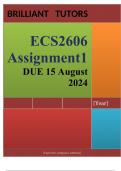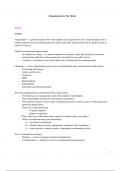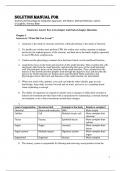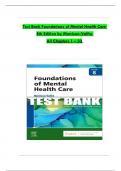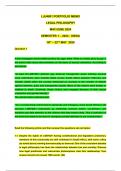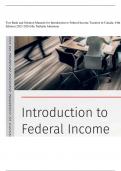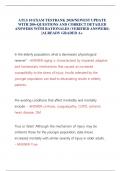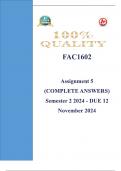Exam (elaborations)
ECS2606 Assignment 1 (COMPLETE ANSWERS) Semester 2 2024 - DUE 15 August 2024 ; 100% TRUSTED Complete, trusted solutions and explanations.
ECS2606 Assignment 1 (COMPLETE ANSWERS) Semester 2 2024 - DUE 15 August 2024 ; 100% TRUSTED Complete, trusted solutions and explanations.
[Show more]
